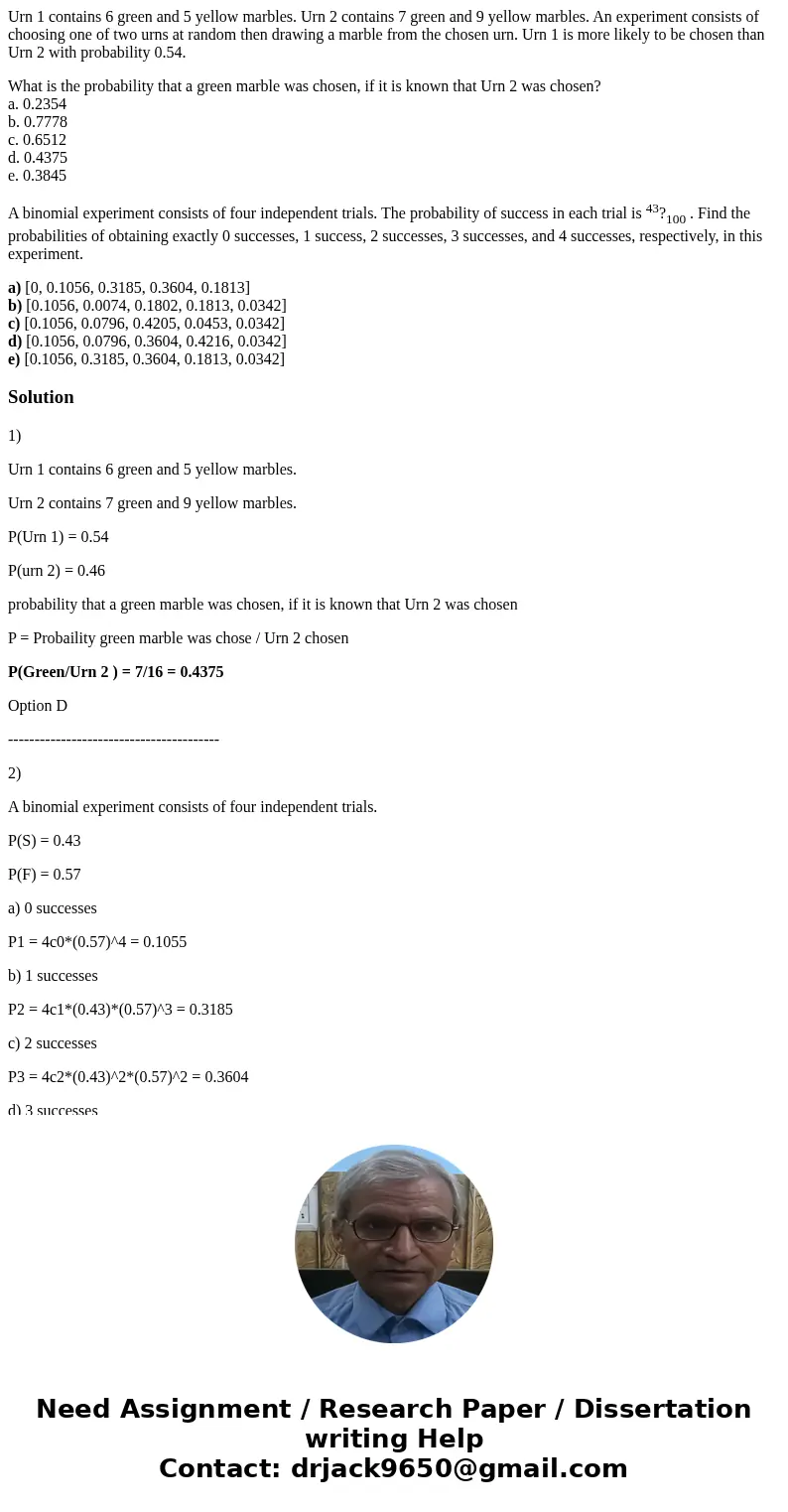Urn 1 contains 6 green and 5 yellow marbles Urn 2 contains 7
Urn 1 contains 6 green and 5 yellow marbles. Urn 2 contains 7 green and 9 yellow marbles. An experiment consists of choosing one of two urns at random then drawing a marble from the chosen urn. Urn 1 is more likely to be chosen than Urn 2 with probability 0.54.
What is the probability that a green marble was chosen, if it is known that Urn 2 was chosen?
a. 0.2354
b. 0.7778
c. 0.6512
d. 0.4375
e. 0.3845
A binomial experiment consists of four independent trials. The probability of success in each trial is 43?100 . Find the probabilities of obtaining exactly 0 successes, 1 success, 2 successes, 3 successes, and 4 successes, respectively, in this experiment.
a) [0, 0.1056, 0.3185, 0.3604, 0.1813]
b) [0.1056, 0.0074, 0.1802, 0.1813, 0.0342]
c) [0.1056, 0.0796, 0.4205, 0.0453, 0.0342]
d) [0.1056, 0.0796, 0.3604, 0.4216, 0.0342]
e) [0.1056, 0.3185, 0.3604, 0.1813, 0.0342]
Solution
1)
Urn 1 contains 6 green and 5 yellow marbles.
Urn 2 contains 7 green and 9 yellow marbles.
P(Urn 1) = 0.54
P(urn 2) = 0.46
probability that a green marble was chosen, if it is known that Urn 2 was chosen
P = Probaility green marble was chose / Urn 2 chosen
P(Green/Urn 2 ) = 7/16 = 0.4375
Option D
----------------------------------------
2)
A binomial experiment consists of four independent trials.
P(S) = 0.43
P(F) = 0.57
a) 0 successes
P1 = 4c0*(0.57)^4 = 0.1055
b) 1 successes
P2 = 4c1*(0.43)*(0.57)^3 = 0.3185
c) 2 successes
P3 = 4c2*(0.43)^2*(0.57)^2 = 0.3604
d) 3 successes
P4 = 4c3*(0.43)^3*(0.57)^1= 0.1812
e) 4 successes
P5 = 4c4*(0.43)^4*(0.57)^0= 0.0341
Option (e) is correct
Hope this will help you !!!!!


 Homework Sourse
Homework Sourse